The livestock sector plays a very significant role in the welfare of India’s population by providing income, nutrition and employment. The share of livestock sector to Gross Value Added (GVA) of India at current prices is 5.1% with annual growth rate of 8.24% (NAS, 2020). One among the livestock sector which accounts for 13.8 per cent of total livestock of our country is sheep.
Accounting for total of 74.26 million sheep population (20th Livestock Census, 2019), this sector is contributing nearly 0.61 Million Tonnes of meat i.e., 7.94% of overall meat. The total meat production in our country is around 7.7 million tonnes and the per capita availability is 3.24 kg/annum as against ICMR recommendations of 10.95 kg/annum (BAHS, 2018). These data directly implies the wide deficit of 7.71 kg/annum meat which suggests the scope for sheep and other livestock farming.
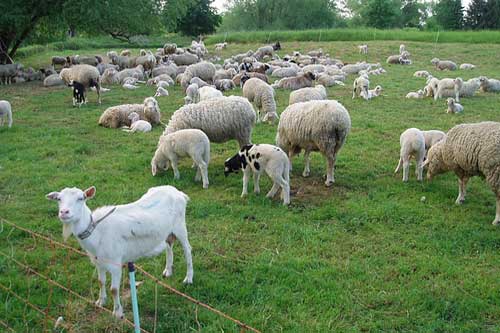
The demands for food products derived from animal are rapidly increasing around the growing population of world with more of consumer demands. With the increasing demands for food and decreasing operating land holdings size (average <1.15 ha) for production of food with many issues pertaining to climate change, water sources deprivation, soil erosion and pesticide/antibiotic residues the requirement of new scientific methods of farming systems which yield more production and profits with sustainability have become talks of the town.
We are Living Vertically, so how about Livestock Farming Vertically?
In India the types of farming system practiced since decade in sheep farming are migratory, extensive, semi-intensive and intensive system in rural areas. This sector is undergoing many changes supported by major technological innovations and structural changes at an unprecedented pace over the past few decades. However, owing to the new scientific production systems which urban areas are evolving on rooftop i.e., vertical farming that are soil free, focus on water conservation and operate with minimal input one can adopt sheep farming vertically too.
By 2050, the population of world is expected to reach nearly 9.7 billion people and feeding those will be a huge challenge. Due to industrial development and urbanization, the arable lands are getting decreased every day. So to utilize the rooftops space efficiently and meet the demands of population new production strategies like vertical farming are very much needed and are gaining popularity in agriculture. This article urges the possibility and need of rooftop sheep farming which could provide sustainable income and nutrition for the upcoming years.
Advantages of Rooftop Sheep farming
- Protein rich food: Scientific sheep farming on rooftop increases overall meat production of country which could decrease the deficit meat availability and malnutrition rate.
- Income: Sheep is known as “ATM of Farmers”. Hence applying this model of farming by farmers, peri-urban and urban people the raise in income of family could be seen.
- Employment: According to the reports of CMIE, Jan-2021, unemployment rate in India is 6.5%. Adopting this model of farming in own/lease/rent available space self-employment can be generated.
I. Entrepreneurship Development
Exploring the opportunities of rooftop farming from starting point to end point such as inputs and market services may show path for creation of entrepreneurship.
a. Input supply
-
- Maize seed / Fodder
- Concentrate feed
- Sheep 3 – 4 months old
- Vaccination, Deworming and Supplements
- Veterinary services and Insurance services
- Hydroponic supplies
b. Market Services
-
- Sale of sheep at prescribed weight or age
- Sale of manure
II. Breeding farms
Practicing scientific breeding principles with adoption of technologies such as estrus synchronization and artificial insemination the track for entrepreneurship can be laid down.
III. Contract farming
Like commercial broilers farming establishing contract farming on this model could be a profitable venture.
- Waste to Wealth: The household biodegradable wastes such as foods and vegetables accounts for nearly 500 gm daily. Collecting households waste and feeding animals minimizes garbage production. The wastes collected from hotels, food trucks, Vegetable markets and bakery can also be fed with proper hygienic measures.
- Manure: On an average a sheep weighing 20-30 kg produces nearly 400 kg manure annually which can be marketed to gain additional income or meet expenses of farming.
- Water Conservation: Using hydroponic technique for growing fodder the water requirement per kg production of fodder in comparison to field can be reduced. Further the adopting rain harvesting also facilitates water conservation.
- Women Empowerment: Housewives can particularly employ this technique of farming with the support of their children which thereby injects additional income to families.
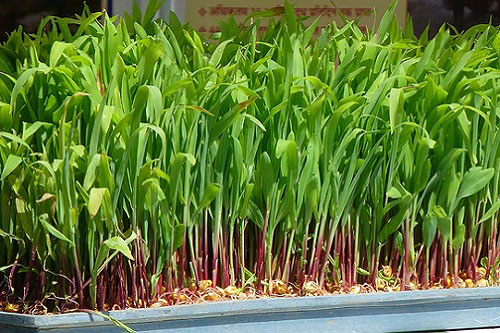
Disadvantages of Rooftop Sheep farming
- High initial investment for construction of shed and hydroponics
- Social compromises with regard to practicing farming in urban areas
Financial Aspects
The loan for establishing project can be availed from:
- MUDRA Scheme
- SHG’s – Deendayal Antyodaya Yojana-National Urban Livelihoods Mission
- NABARD – Joint Liability Groups
Conclusion
This new model of practicing rooftop sheep farming is a futuristic subject to most of us but it has potential to create substantial amount of employment, nutritious food and income. By exploring the benefits of farming through research, eliminating possible disadvantages and brining favorable social attitude will help to increase urban rooftop farming. Further providing training, advisory services and financial support to resource poor/unemployed people to take up entrepreneurship activity on this project could help to double their income and become self-reliant.
A Project Report for Establishment of Rooftop 5, 10, 20 and 30 Flock Sheep Farm
Project Cost
Project Cost with Hydroponics
| Sl. No | Flock Size | Construction of Shed | Lamb Purchase | Hydroponics | Feed Cost | Veterinary Services | Total |
| 1 | 5 | 17295 | 20000 | 11020 | 10745 | 1500 | 60560 |
| 2 | 10 | 22180 | 40000 | 17604 | 24190 | 3000 | 106974 |
| 3 | 20 | 33100 | 80000 | 30072 | 42980 | 6000 | 192152 |
| 4 | 30 | 41485 | 120000 | 41990 | 64470 | 9000 | 276945 |
Project Cost without Hydroponics
| Sl. No | Flock Size | Construction of Shed | Lamb Purchase | Feed Cost | Veterinary Services | Total |
| 1 | 5 | 17295 | 20000 | 1349 | 1500 | 40144 |
| 2 | 10 | 22180 | 40000 | 6745 | 3000 | 71925 |
| 3 | 20 | 33100 | 80000 | 13490 | 6000 | 132590 |
| 4 | 30 | 41485 | 120000 | 26980 | 9000 | 197465 |
Shed Construction and Equipment’s
Cost for Construction of Shed and Equipment’s
| Sl. No | Particulars | Unit | Rate (Rs) | 5 | 10 | 20 | 30 |
| 1 | Floor space 10 sq. ft/sheep | – | – | 50 | 100 | 200 | 300 |
| 2 | Asbestos sheet (Covering 4 sides + Roof)
|
1 sqft | 20 | 4640
(232 sqft) |
6320
(316 sqft) |
10720
(536 sqft) |
13280
(664 sqft) |
| 3 | Iron pipe 1.5’’x2’’ 20ft length | 1
(13 kg) |
845 | 2535
(3)
|
3380
(4) |
6760
(8) |
7605
(9) |
| 4 | J and U Clamp | 1 | 40 | 320
(8) |
480
(12) |
720
(18) |
800
(20) |
| 5 | Iron sheet Door (2.5 ft x 8 ft) | 1 | 2000 | 2000 | 2000 | 2000 | 2000 |
| 6 | Labour | 1000 | 2000 | 3000 | 5000 | ||
| 7 | Chain Link Fencing (30ft x 20ft) | 1 sqft | 17 | 3500
(500 sqft) |
3500
(500 sqft) |
3500
(500 sqft) |
3500
(500 sqft) |
| 8 | Iron Pipe for fencing | 1 | 700 | 2100
(3) |
2100
(3) |
2100
(3) |
2100
(3) |
| 9 | Fibre Feeder (100 cm x 20 cm x 30cm) | 1 | 700 | 700 | 1400 | 2800 | 4200 |
| 10 | Miscellaneous (Electricity/ Pipeline/ Buckets) | 500 | 1000 | 1500 | 2000
|
||
|
Total |
17295 | 22180 | 33100 | 41485 | |||
| 1 | Iron Colour sheet (4 sides + Roof) | 1 sqft | 105 | 24360 | 33180 | 56280 | 78120 |
| Iron sheet Total ( Minus Asbestos) | 37015 | 49040 | 78660 | 105325 | |||
Hydroponics Unit
Assumptions
- On average 1 Kg Maize seed Produces 7 kg green fodder in 8 days
- 1 Tray seed capacity 1 kg
- Each sheep is fed on an average 4 kg hydroponic green fodder
- Required number of trays for feeding sheep
| Sl. No | Flock Size | Feed requirement/day | Trays |
| 1. | 5 | 20 | 24 |
| 2. | 10 | 40 | 48 |
| 3. | 20 | 80 | 96 |
| 4. | 30 | 120 | 140 |
Cost for Construction of Hydroponics
| Sl. No | Particulars | Unit | Rate | 5 | 10 | 20 | 30 |
| 1 | PVC pipe 1’’ | 16 ft | 300 | 2700
(9) |
6000
(20) |
12000
(40) |
18000
(60) |
| 2 | Trays 1.5 ft x 2 ft | 1 | 100 | 2400 | 4800 | 9600 | 14000 |
| 3 | Water Pump Motor 0.5 hp | 1 | 2500 | 2500 | 2500 | 2500 | 2500 |
| 4 | Automatic timer motor switch | 1 | 2500 | 2500 | 2500 | 2500 | 2500 |
| 5 | Micro Sprinkler (one way) | 1 | 50 | 300
(6) |
600
(12) |
1200
(24) |
1750
(35) |
| 6 | Green shade net | 1 sqft | 1.5 | 300 | 500 | 800 | 1000 |
| 7 | Pipeline 0.5’’ | 1 sqft | 8 | 320
(40) |
704
(88) |
1472
(184) |
2240
(280) |
| Total | 11,020 | 17604 | 30072 | 41990 | |||
Feed and Fodder
Feed Requirements
| Feeding | Average | DMI% required | DMI gm | ME Required Mcal | CP Required gm |
| 10-15 kg | 12.5 | 4.3 | 0.53 | 1.23 | 90 |
| 15-20 kg | 17.5 | 3.8 | 0.57 | 1.64 | 109 |
| 20-30 kg | 25 | 3.1 | 0.775 | 2.07 | 132 |
Nutrient Composition of Hydroponic Maize and Concentrate feed
a. Hydroponics Maize green fodder
DM = 200 gm CP = 10% ME = 2.629 Mcal/Kg
b. Nutrient Composition of Concentrate feed
| Ingredients | ME Kcal/Kg | CP % | Level | ME Total Kcal | CP Kg | Price/Kg Rs | Total Price Rs |
| Maize | 3100 | 9 | 43 | 133300 | 3.87 | 18 | 774 |
| GNC | 2800 | 40 | 22 | 61600 | 8.8 | 38 | 836 |
| DORB | 2100 | 17 | 32 | 67200 | 5.44 | 12 | 384 |
|
Mineral Mixture |
2 | 170 | 340 | ||||
| Salt | 1 | 5 | 5 | ||||
| Total | 100 | 262100 | 18.11 | 2339 | |||
Cost of feed for 1 kg = 23.39 CP% = 18.11 ME = 2.621 Mcal/Kg
Cost of Hydroponic green fodder = 3.5 Rs/Kg Cost of Super Napier – 1.5 Rs/Kg
Feeding of Sheep according to Body weight category
| Sheep Body weight Kg | Green Fodder Kg | Concentrate gm | DM gm | ME Mcal/Sheep | CP gm |
| 10-15 | 2 | 300 | 670 | 1.85 | 98.33 |
| 15-20 | 3 | 250 | 825 | 2.245 | 111.3 |
| 20-30 | 5 | 250 | 1.225 | 3.295 | 155 |
Note: Nutritional requirements met are over and above to ICAR, Feeding Standards, 2013
Cost of Feed and Fodder
| Sl. No | Particulars | Hydroponic Fodder Kg (3.5 Rs) | Concentrate feed gm (23.39 Rs) | Cost Type A (Hydroponic + Concentrate) | Super Napier Kg (1.5 Rs) | Cost Type B (Super Napier + Concentrate) |
| 1 | 0-40 days | 2 | 0.3 | 561 | 2 | 401 |
| 2 | 41-80 days | 3 | 0.25 | 654 | 3 | 414 |
| 3 | 81-120 days | 5 | 0.25 | 934 | 5 | 534 |
| Total Rs | 2149 | 1349 | ||||
Cost of Production on Type 1a and Type 1b Feed
| Sl. No | Flock Size | Cost for Production on Hydroponics feed Rs Type 1a | Cost for Production with Super Napier Rs Type 1b |
| 1. | 1 | 2149 | 1349 |
| 2. | 5 | 10745 | 6745 |
| 3. | 10 | 24190 | 13490 |
| 4. | 20 | 42980 | 26980 |
| 5. | 30 | 64470 | 40470 |
Purchase of Lamb
Assumption
- Lambs weighing 10 Kg (90 days old) are purchased @400 Rs/Kg
| Sl. No | Flock Size | Price Rs |
| 1 | 1 | 4000 |
| 2 | 5 | 20000 |
| 3 | 10 | 40000 |
| 4 | 20 | 80000 |
| 5 | 30 | 120000 |
Project Economics
| Income | |||||
| Type 1 | Type 2 | ||||
| Sale of Sheep | In Rupees | In Rupees | |||
| 1 | 8400 | 9480 | |||
| 5 | 42000 | 47400 | |||
| 10 | 84000 | 94800 | |||
| 20 | 168000 | 189600 | |||
| 30 | 252000 | 284400 | |||
| Expenditure | Cost for Production on Hydroponics feed Rs | Cost for Production with Super Napier Rs | |||
| 1 | 2149 | 1349 | |||
| 5 | 10745 | 6745 | |||
| 10 | 24190 | 13490 | |||
| 20 | 42980 | 26980 | |||
| 30 | 64470 | 40470 | |||
| Veterinary Services (Vaccination+ Medications) | Type 1 | Type 2 | |||
| 1 | 300 | 300 | |||
| 5 | 1500 | 1500 | |||
| 10 | 3000 | 3000 | |||
| 20 | 6000 | 6000 | |||
| 30 | 9000 | 9000 | |||
| Total Expenditure | Type 1 | Type 2 | |||
| 1 | 2449 | 1649 | |||
| 5 | 12245 | 8245 | |||
| 10 | 27190 | 16490 | |||
| 20 | 48980 | 32980 | |||
| 30 | 73470 | 49470 | |||
| Net Income= Income – (Expenditure + Lamb Purchase) | |||||
| Flock Size | Type 1a | Type 1b | Type 2a | Type 2b | |
| 1 | 1951 | 2751 | 3031 | 3831 | |
| 5 | 9755 | 13755 | 15155 | 19155 | |
| 10 | 16810 | 27510 | 27610 | 38310 | |
| 20 | 39020 | 55020 | 60620 | 76620 | |
| 30 | 58530 | 82530 | 90930 | 114930 | |
Monthly Net Income
Type 1
| Sl. No | Flock Size | On Hydroponics Type 1a Rs | On Super Napier Type 1b Rs |
| 1 | 1 | 488 | 688 |
| 2 | 5 | 2439 | 3439 |
| 3 | 10 | 4203 | 6878 |
| 4 | 20 | 9755 | 13755 |
| 5 | 30 | 14633 | 20633 |
Type 2
| Sl. No | Flock Size | On Hydroponics Type 2a Rs | On Super Napier Type 2b Rs |
| 1 | 1 | 758 | 958 |
| 2 | 5 | 3789 | 4789 |
| 3 | 10 | 7578 | 9578 |
| 4 | 20 | 15155 | 19155 |
| 5 | 30 | 22733 | 28733 |
Financial Analysis of Sheep Farming
| Sl. No | Income | BCR | Break Even Weight |
| 1 | Type 1a | 1.3 | 21.5 |
| 2 | Type 1b | 1.48 | 18.9 |
| 3 | Type 2a | 1.46 | 21.5 |
| 4 | Type 2b | 1.67 | 18.9 |
Note:
- Type 1a = Net income produced by Sheep fed on hydroponics and sold either at 300Rs/Kg or Weighing 28 Kg (150 g gain/day)
- Type 1b = Net income produced by Sheep fed on super napier and sold either at 300Rs/Kg or Weighing 28 Kg (150 g gain/day)
- Type 2a = Net income produced by Sheep fed on hydroponics and sold either at 340Rs/Kg or Weighing 31.6 Kg (180 g gain/day)
- Type 2a = Net income produced by Sheep fed on super napier and sold either at 340Rs/Kg or Weighing 31.6 Kg (180 g gain/day)




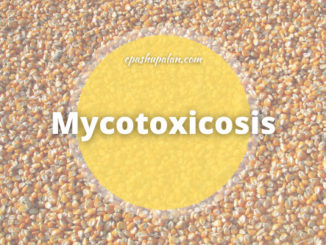
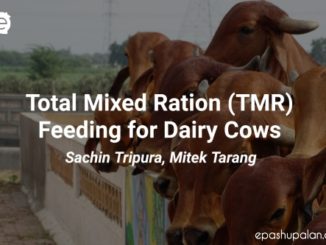
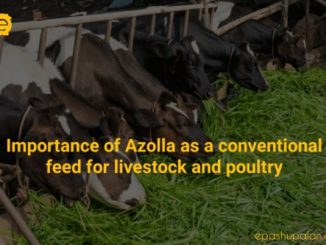

Be the first to comment